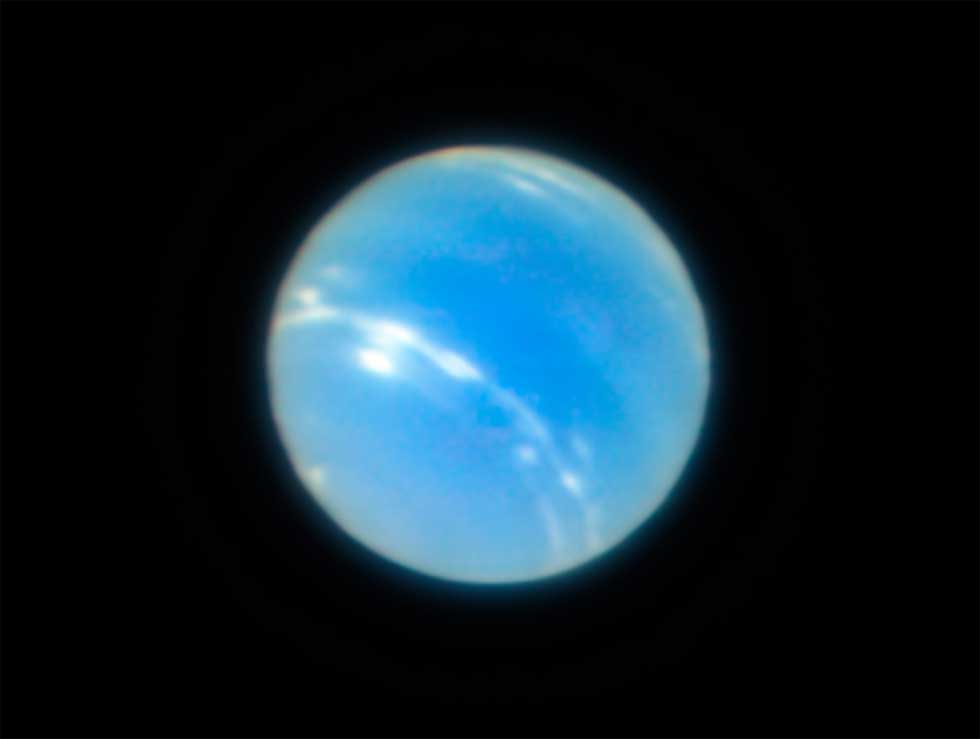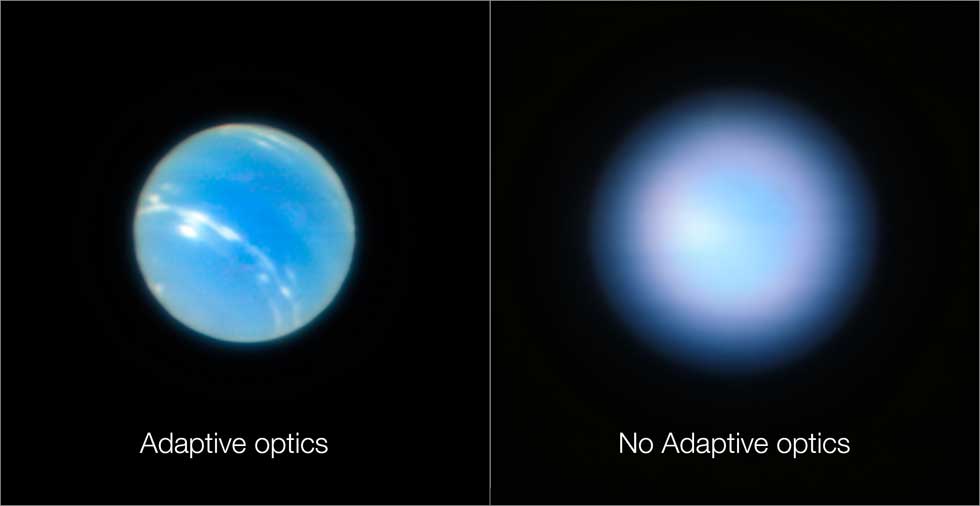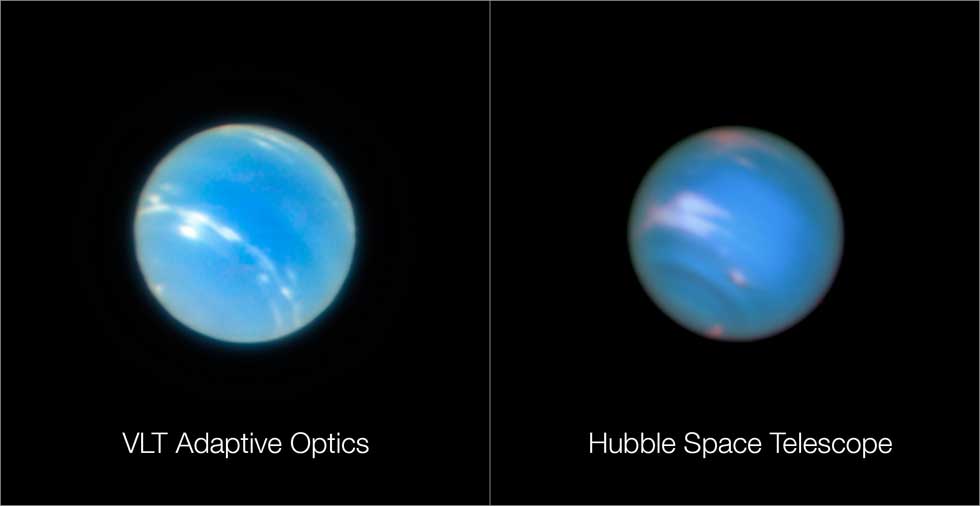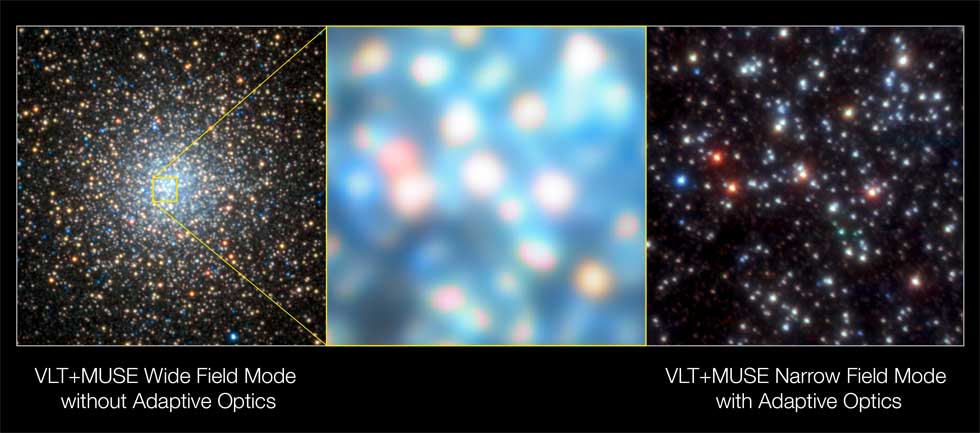ESO Very Large Telescope Gets Adaptive Optics For Sharper Images
The European Southern Observatory (ESO) Very Large Telescope (VLT) has been fitted with new adaptive optics mode called laser tomography. The telescope has achieved first light using the new optics mode and the difference in image sharpness is stunning compared to before images. In testing, the ESO used the new optics to take images of Neptune and star clusters.
Some of the images compare before and after the laser tomography mode was added. VLT's MUSE instrument in narrow-field mode was used along with the GALACSI adaptive optics module to correct for turbulence at different altitudes in the atmosphere. That allows the capture of images from the ground at visible wavelengths that are sharper than those captured by the Hubble Space Telescope in orbit.
GALACSI uses the Laser Guide Star Facility, 4LGSF, which is a subsystem of the Adaptive Optics Facility or AOF. AOF provides the adaptive optics for instruments on the VLT's Unit Telescope 4. MUSE is the first instrument to benefit from this new facility and has a pair of optics modes including Wide Field Mode and Narrow Field Mode. MUSE Wide Field Mode coupled with GALACSI in ground-layer mode allows for correction of the effects of atmospheric turbulence in Earth's atmosphere up to a kilometer above the telescope over a wide field of view.
When using the new Narrow Field Mode using laser tomography the team can correct almost all the atmospheric turbulence above the telescope to create much sharper images, but only over a small region of the sky. That new tool allows the VLT to reach the theoretical limit of image sharpness and the telescope is no longer limited by atmospheric blur.
The ESO says such sharpness is very hard to attain and allows images to be taken that are comparable in sharpness to those taken with the Hubble telescope that doesn't have to deal with the atmosphere at all. The new tool works by beaming four lasers into the sky that generate intense orange light 30 centimeters in diameter. The laser beams stimulate sodium atoms high in the atmosphere and create artificial Laser Guide Stars. The adaptive optics use those guide stars create to determine turbulence in the atmosphere and calculate corrections. The result is very sharp images seen here.
SOURCE: ESO




